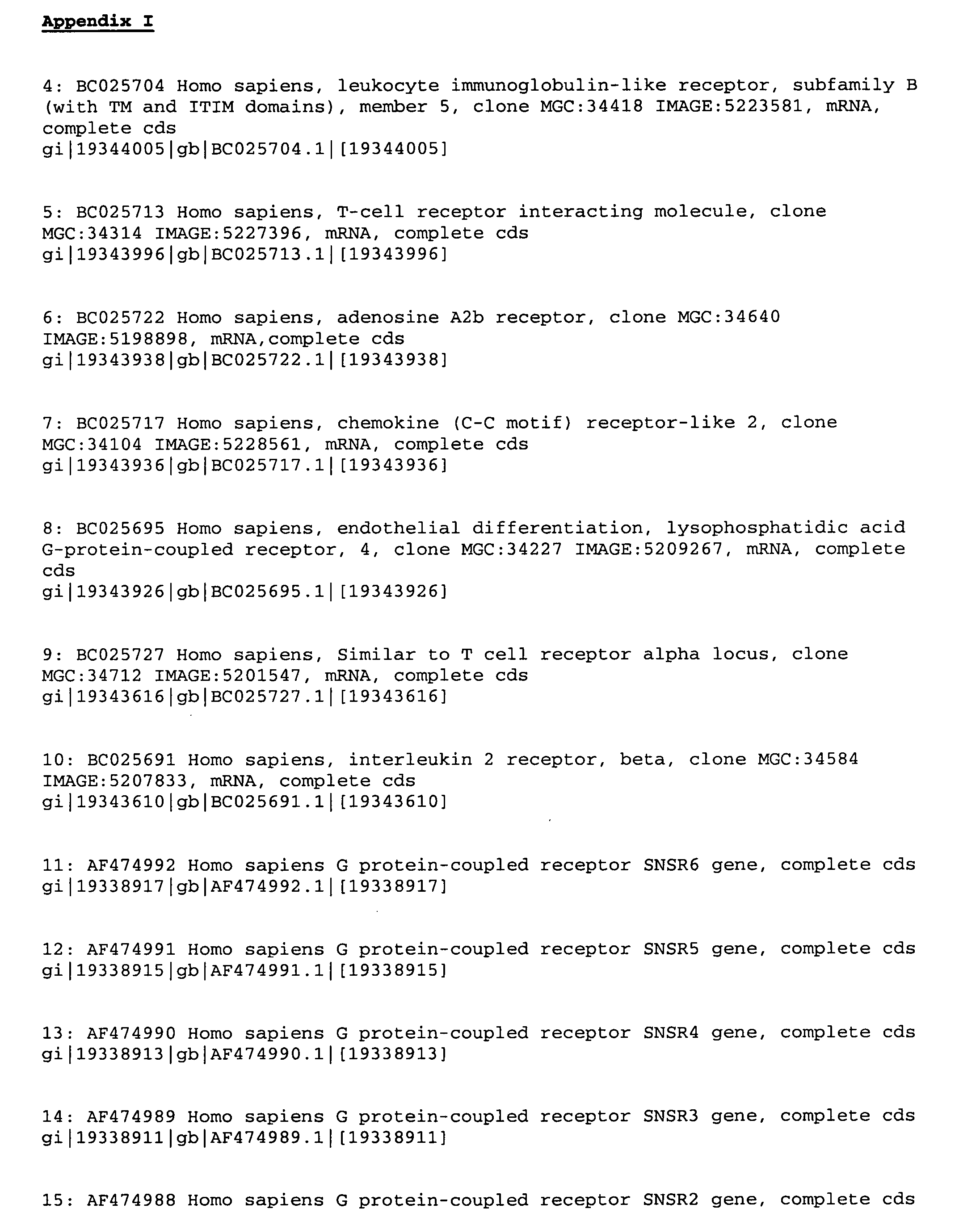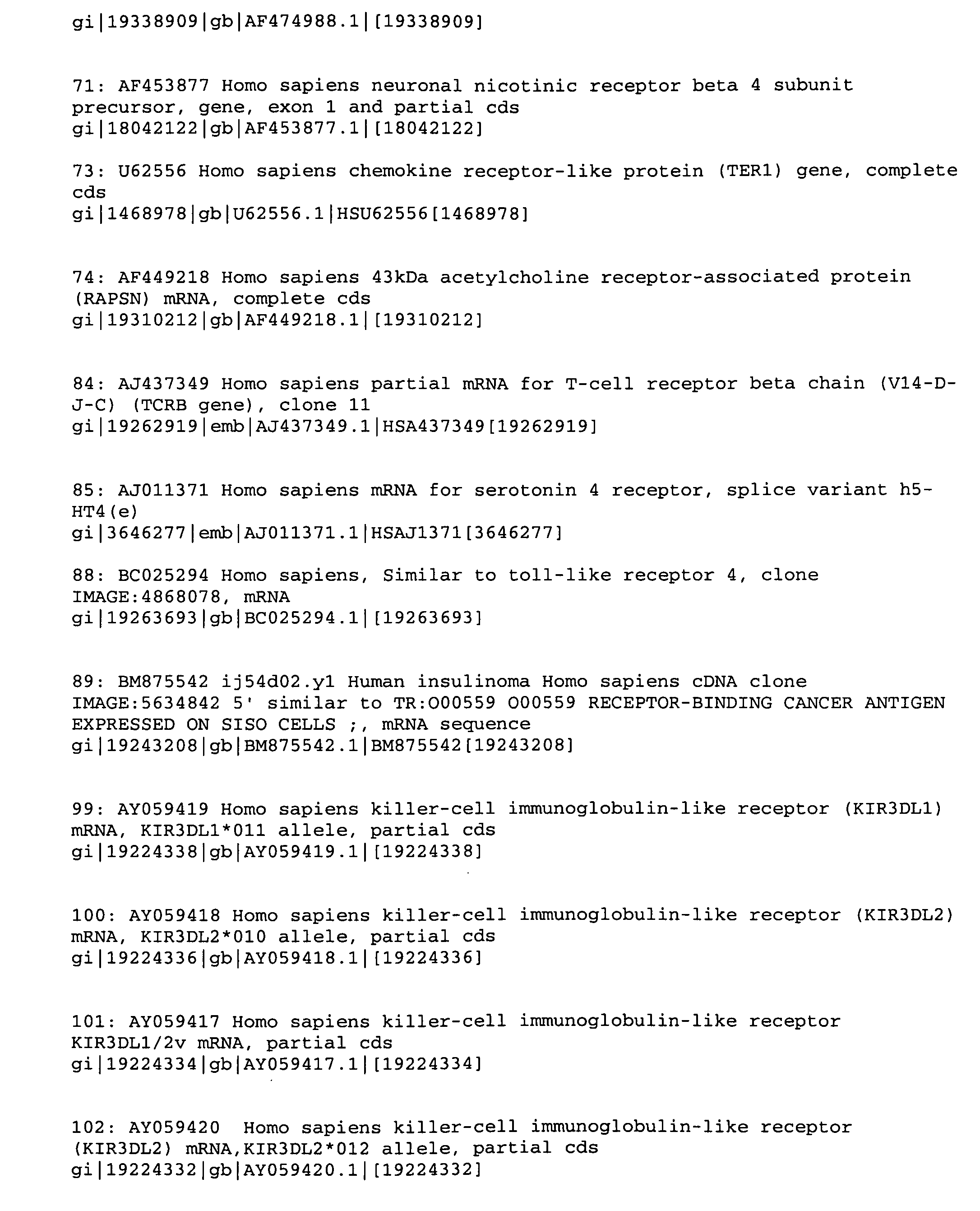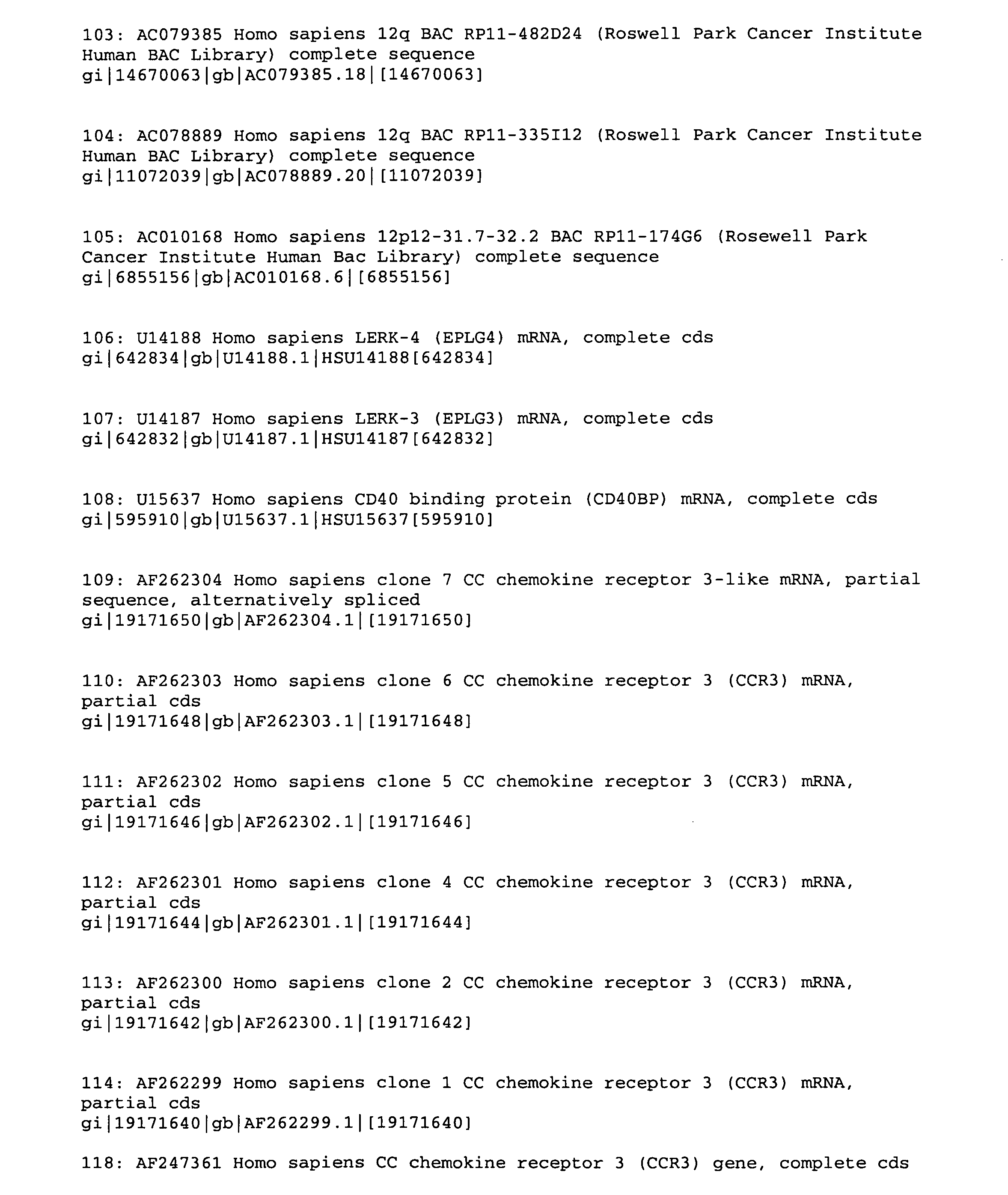Lectin compositions and methods for modulating an immune response to an antigen
a technology of lectin and composition, applied in the field of lectin composition and composition for modulating the immune response to an antigen, can solve the problems of inability to detect and treat specific diseases, inability to achieve specific cell targeting, and inability to detect severe local inflammation, so as to reduce the incidence of targeted diseases, reduce the number of metastases, and reduce morbidity or mortality
- Summary
- Abstract
- Description
- Claims
- Application Information
AI Technical Summary
Benefits of technology
Problems solved by technology
Method used
Image
Examples
example 1
Cloning of a Murine GM-CSF Fused to the S. cerevesiae Gas1 GPI Modification Signal Sequence
[0532]The starting point for producing a yeast expression vector was the pUC19-GM-CSF-mammalian GPI signal sequence plasmid (pUC19-GM-CSF-GPI). This plasmid encodes murine GM-CSF (upstream) fused in-frame to the human Thy-1 GPI modification signal sequence (downstream). The following two oligonucleotides were purchased from Midland Certified Reagent Company (Midland, Tex.):
GTX-55′pAATTCCGCGCCGGCACAGTGCTCAGAGACAAACTGGTCAAGTGTGAGGGCATCAGCCTGCTGGCTCAGAACACCTCGTGGCTGCTGCTGCTCCTGCTGTCCCTCTCCCTCCTCCAGGCCACGGATTTCATGTCCCTGTGACTGGGTAC3′
GTX-5 comprises:[0533]a. Sequences at the 5′ end suitable for ligating to an EcoRI site (bases 1-5)[0534]b. An NgoM1 site for creating an in-frame chimeric coding sequence (bases 9-14)[0535]c. The coding sequence for the GPI modification sequence of human Thy-1 (Genbank Accession No. M11749) (bases 15-137)[0536]d. A termination codon (bases 138-140)[0537]e. Sequences at...
example 2
Expression of Murine GM-CSF Fused to the Gas1 GPI Modification Signal Sequence in Yeast
[0557]A 50 ml culture of the E. coli clone containing pITY-GMCSF-Gas1.1 was grown in LB with 100 ug / ml kanamycin and the plasmid purified using a Midi-Prep Kit from Qiagen. The S. cerevesiae strain BJ5464 (ATCC) was then transformed with pITY-GMCSF-Gas1.1 using a lithium acetate (LiAc) protocol. A 10 ml overnight culture of BJ5464 in YPD (Per liter: 20 g Bactotryptone, 10 g yeast extract, 20 g dextrose) was used to inoculate a 100 ml flask. Yeast were grown for 3 hours at 30° and then harvested by centrifugation at 12,000×g for 2 minutes at room temperature. Cells were washed with sterile water and centrifuged again. The cells were resuspended in 1.0 ml of 100 mM LiAc, transferred to a 1.5 ml microfuge tube and centrifuged in an Eppendorf microfuge at top speed for 15 seconds. The cells were then resuspended in 0.5 ml of 100 mM LiAc and 50 uL samples were aliquoted to individual tubes. The cells w...
example 3
Attachment of Murine GM-CSF Fused to the Gas1 GPI Modification Signal Sequence to Cells
[0563]Wild type CMS-5 murine fibrosarcoma cells grown in DMEM, 10% FBS, Pen-Strep were harvested, washed twice with RPMI 1640 (Life Technologies) and resuspended in RPMI 1640 at a concentration of 5×105 cells / ml. 0.9 ml aliquots of the cell suspension were dispensed to Eppendorf siliconized microfuge tubes. Each aliquot received either 1 ug of purified GPI-GM-CSF prepared as in Example 2, 1 ug of soluble recombinant murine GM-CSF (Intergen, supplied as lyophilized powder and reconstituted at 40 ug / ml in the same buffer as GPI-GM-CSF), or media alone. Cells were then incubated for 3 hours at 37° C. with shaking and then washed 3 times with PBS containing 2% FBS.
[0564]For detection of GPI-GM-CSF by flow cytometry, cells were incubated with a rat anti-murine GM-CSF monoclonal antibody (Endogen) for one hour at 4° C. The cells were then washed 3 times with PBS containing 2% FBS, and incubated with FIT...
PUM
| Property | Measurement | Unit |
|---|---|---|
| nucleic acid | aaaaa | aaaaa |
| surface polypeptide | aaaaa | aaaaa |
| mammalian cell surface polypeptide | aaaaa | aaaaa |
Abstract
Description
Claims
Application Information
 Login to View More
Login to View More - R&D
- Intellectual Property
- Life Sciences
- Materials
- Tech Scout
- Unparalleled Data Quality
- Higher Quality Content
- 60% Fewer Hallucinations
Browse by: Latest US Patents, China's latest patents, Technical Efficacy Thesaurus, Application Domain, Technology Topic, Popular Technical Reports.
© 2025 PatSnap. All rights reserved.Legal|Privacy policy|Modern Slavery Act Transparency Statement|Sitemap|About US| Contact US: help@patsnap.com



